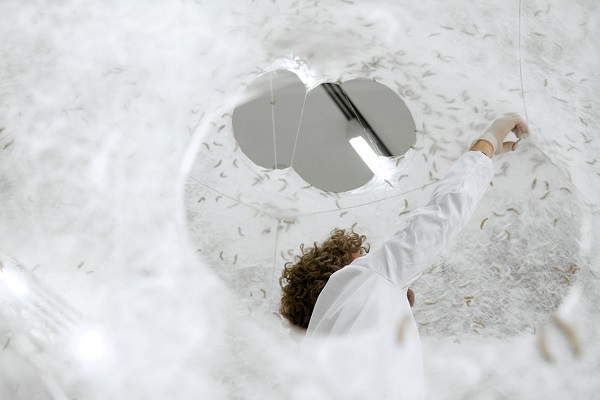EarthTalk®
From the Editors of E – The Environmental Magazine

Dear EarthTalk: Can you explain the concept of “Material Ecology” as advertised in a new Museum of Modern Art exhibit? — Nancy R., New York, NY
Israeli-born designer and architect Neri Oxman, founding director of the Mediated Matter Group at the Massachusetts Institute of Technology’s Media Lab, coined the term Material Ecology to describe a process of combining materials science, digital fabrication technologies and organic design to produce techniques and objects informed by the structural, systemic and aesthetic wisdom of nature.
Oxman’s vision involves harnessing biological impulses to grow and build in the pursuit of developing structures out of natural elements alongside man-made designs and parts. “It is the definition of ecology—the branch in biology that deals with the relations between organisms and their physical surroundings—applied to all things man-made or human-designed,” she tells Dezeen. “Biology is far more refined and sophisticated than material practices involved in polymers, concrete, steel and glass,” she adds. “But what if we could change that by creating new technologies that can vary the physical properties of matter at a resolution and sophistication that approaches that of the natural world?”
The best-known example of Oxman’s work to date is the so-called Silk Pavilion, first conceived at MIT in 2013, whereby 6,500 silkworms were fed and released onto a human-designed, robot-created cocoon-like dome structure, eventually completing the human/natural architecture by weaving a silk cover.
Animal rights activists might at first be alarmed at the concept of enslaving silkworms to make use of their biological product for human benefit, but taking a wider view of the situation affords a more humane conclusion. Oxman points out that the traditional process of harvesting silk (“sericulture”) kills silkworm larva, effectively sacrificing the next generation of silkworms for the sake of producing silk.
“In the textile and silk industry today, silkworms are exterminated while in their cocoon, dissolving the adhesive that glues one strand of silk to the layers below,” reports Oxman. “This process allows a single silk strand to be unrolled from the cocoon, but disrupts the life cycle and development of the organism.”
But in creating the silk cover for the pavilion, the silkworms’ product ends up in use as strands in the structure’s cover instead of as the walls of a cocoon; no silkworms-to-be are harmed.
Oxman hopes her work can highlight that, with creative thinking, we can overcome the limitations of “additive manufacturing” (e.g., 3D printing) at architectural scales. Currently the small size of 3D printers restricts the usefulness in real-world applications for this emerging technology.
Putting 3D printers on huge robotic arms and combining the technology with natural forms of building (like the silkworm’s silk) could revolutionize how we build.
“In the future, we will not build our products and our architecture; rather we will grow them,” Oxman predicts. “But it will take a village, not a lab.”
To see more of Oxman’s work and find out more about the fast-evolving world of Material Ecology, check out the Museum of Modern Art’s virtual exhibit “Neri Oxman: Material Ecology” which runs February 22-May 25, 2020.
CONTACTS:
Neri Oxman, neri.media.mit.edu;
“Silkworms and robot work together to weave Silk Pavilion,” dezeen.com/2013/06/03/silkworms-and-robot-work-together-to-weave-silk-pavilion.
EarthTalk® is produced by Roddy Scheer & Doug Moss for the 501(c)3 nonprofit EarthTalk. See more at https://emagazine.com. To donate, visit https://earthtalk.org. Send questions to: question@earthtalk.org.
